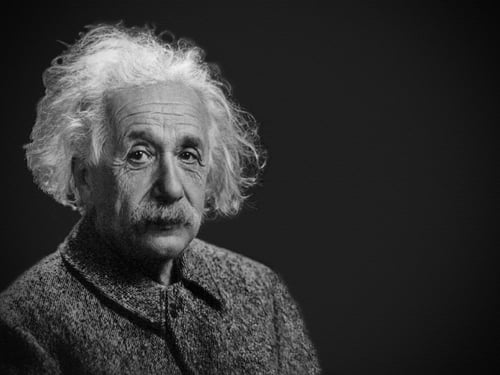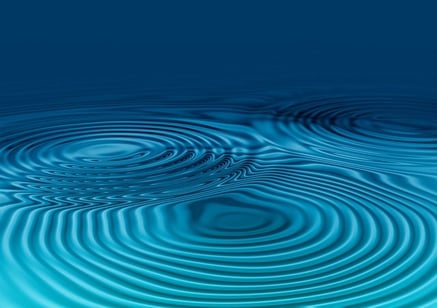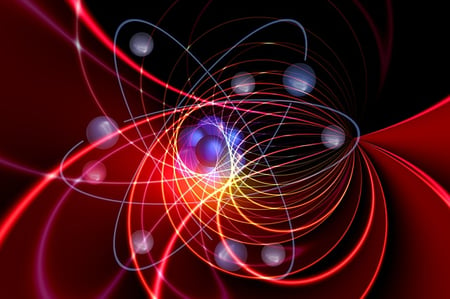I took IB Physics HL back in my high school days. It is still probably the most challenging class I have ever taken (even including my college courses), but I got a 6 on the exam, so trust me—it's doable.
In this article, we'll discuss all the themes and subtopics covered in IB Physics Standard Level and IB Physics Higher Level, the number of hours dedicated to each topic, and the practical work and assessments IB Physics students have to take. I’ll also explain the changes coming to IB Physics in August 2023 so you’re prepared for the new syllabus.
2023 IB Physics Changes
Beginning in August 2023, the IB Physics will look much different, and the first assessment for the course will take place in May 2025. To check out the sources of information from the article, take a look at the updated IB Physics subject brief and the IB’s website that outlines the changes made to the curriculum.
The first big change for the course is the reduced amount of content students will cover. IB is shifting all of their science courses to focus much more on conceptual learning and skill development. This just means that they’d rather students learn fewer topics and gain deeper knowledge, practical skills, and critical thinking and assessment (as opposed to a greater number of topics and less knowledge and skills gained from them).
So the new syllabus will cover less content, but the overarching themes of the course core and their subtopics are still diverse and challenging. Option topics have also been removed. Whereas SL and HL students used to cover the same core and then choose additional option topics (like relativity or astrophysics), that optional content has been worked into the SL and HL subtopics or removed from the course.
The internal and external assessments for IB Physics have also changed. The internal assessment used to be called ‘individual investigation,’ and now it’s called ‘scientific investigation.’ The change in name is coupled with a change in approach—students will now be able to collaborate with their peers to discuss methodologies and support each other within small groups while they conduct experiments and lab work. This is quite different from the older approach, where students had to work by themselves for the entire process.
Students must also produce a report from their scientific investigation, and their reports must be completely their own (so, you can collaborate with your peers to discuss the methods you’re using and approaches you’re taking in your labs, but you can’t write your reports together or share the same experiments or results). This report is the internal assessment for IB Physics.
The last big change to the course syllabus for August 2023 is that students will only take 2 external assessments: Paper 1—divided into two parts—and Paper 2. I’ll go more into detail about these papers in a bit.
Keep in mind that the full course syllabus for IB Physics hasn’t been released by the IB yet, so there are still a lot of unknowns. We don’t yet know what the learning goals will be for the course themes or what content students will have to know for each subtopic within them, and there may be even more details included in the full syllabus about the changes happening to the curriculum.
For this article, we’ve used the IB’s updates and IB Physics subject brief to give you an overview of the changes made to the course and the new curriculum content. When we learn more about the full, updated syllabus, we’ll expand and include everything you need to know.
For now, let’s get started!
Skills in the Study of Physics
The IB believes that in order to be relevant and effective, education in the sciences has to focus on skills and the interconnectedness of concepts, contexts, and content. It also has to help students gain a deeper knowledge of these things so they can have self understanding.
With these goals in mind, the new IB Physics curriculum is aimed at developing deeper understanding and skills, which the IB calls approaches to learning.
Approaches to Learning
- Thinking skills
- Research skills
- Self-management skills
- Communication skills
- Social skills
IB Physics students will also be encouraged to work with educational tools consistently throughout the course. They’ll have to use each tool in different ways for each of the course concepts, helping to build familiarity with the tools and confidence with the skills developed from using them.
Tools
- Experimental techniques
- Technology
- Mathematics
Lastly, students will develop their inquiry skills and scientific literacy. The IB’s focus on deep, conceptual understanding of concepts and skills is intended to make students aware and critical of their own knowledge so that they can transfer it and their skills to new and different concepts.
Inquiry Process
- Exploring and designing
- Collecting and processing data
- Concluding and evaluating
IB Physics SL and HL Core
IB Physics SL and HL students will cover all 5 major themes included in the course's core, but some subtopics include additional material for HL students only, and a few entire subtopics are just for HL students. For instance, while SL and HL students will all study theme A (space, time, and motion), only HL students will cover subtopics A.4 (rigid body mechanics) and A.5 (Galilean and special relativity). This is why the core for IB Physics SL covers 110 hours and HL covers 180.
Like mentioned above, the curriculum is divided into 5 broad themes with several subtopics within them. Take a look at the syllabus breakdown by theme:
Theme A: Space, Time and Motion—27 Hours for SL and 42 Hours for HL
|
Subtopic Number
|
Subtopic
|
IB Points to Understand
|
|
A.1
|
Kinematics
|
TBA
|
|
A.2
|
Forces and momentum
|
TBA
|
|
A.3
|
Work, energy and power
|
TBA
|
|
A.4
|
Rigid body mechanics (HL only)
|
TBA
|
|
A.5
|
Galilean and special relativity (HL only)
|
TBA
|
Theme B: Mechanics—22 Hours for Both SL and HL
|
Subtopic Number
|
Subtopic
|
IB Points to Understand
|
|
B.1
|
Thermal energy transfers
|
TBA
|
|
B.2
|
Greenhouse effect
|
TBA
|
|
B.3
|
Gas laws
|
TBA
|
|
B.4
|
Thermodynamics (HL only)
|
TBA
|
|
B.5
|
Current and circuits
|
TBA
|
Theme C: Wave Behaviour—17 Hours for SL and 29 Hours for HL
|
Subtopic Number
|
Subtopic
|
IB Points to Understand
|
|
C.1
|
Simple harmonic motion (additional HL content)
|
TBA
|
|
C.2
|
Wave model
|
TBA
|
|
C.3
|
Wave phenomena (additional HL content)
|
TBA
|
|
C.4
|
Standing waves and resonance
|
TBA
|
|
C.5
|
Doppler effect (additional HL content)
|
TBA
|
Theme D: Fields—19 Hours for SL and 38 Hours for HL
|
Subtopic Number
|
Subtopic
|
IB Points to Understand
|
|
D.1
|
Gravitational fields (additional HL content)
|
TBA
|
|
D.2
|
Electric and magnetic fields (additional HL content)
|
TBA
|
|
D.3
|
Motion in electromagnetic fields
|
TBA
|
|
D.4
|
Induction (HL only)
|
TBA
|

Theme E: Nuclear and Quantum Physics—23 Hours for SL and 39 Hours for HL
|
Subtopic Number
|
Subtopic
|
IB Points to Understand
|
|
E.1
|
Structure of the atom (additional HL content)
|
TBA
|
|
E.2
|
Quantum physics (HL only)
|
TBA
|
|
E.3
|
Radioactive decay (additional HL content)
|
TBA
|
|
E.4
|
Fission
|
TBA
|
|
E.5
|
Fusion and stars
|
TBA
|
Bonus: Want to get a perfect SAT or ACT score? Read our famous guide on how to score a perfect 1600 on the SAT, or a perfect 36 on the ACT.
You'll learn top strategies from the country's leading expert on the SAT/ACT, Allen Cheng, a Harvard grad and perfect scorer. No matter your level, you'll find useful advice here—this strategy guide has been read by over 500,000 people.
Read the 1600 SAT guide or 36 ACT guide today and start improving your score.
Additional Higher Level Topics
These 4 topics are only for IB Physics Higher Level students—60 hours total for HL only
Wave Phenomena—17 Hours for HL Only
| Subtopic | Subtopic Number | IB Points to Understand |
| Simple harmonic motion (HL ONLY) |
9.1 |
|
| Single-slit diffraction (HL ONLY) |
9.2 |
|
| Interference (HL ONLY) |
9.3 |
|
| Resolution (HL ONLY) | 9.4 |
|
| Doppler effect (HL ONLY) | 9.5 |
|
Fields—11 Hours for HL only
| Subtopic | Subtopic Number | IB Points to Understand |
| Describing fields (HL ONLY) |
10.1 |
|
| Fields at work (HL ONLY) |
10.2 |
|
Electromagnetic Induction—16 Hours for HL Only
| Subtopic | Subtopic Number | IB Points to Understand |
| Electromagnetic induction (HL ONLY) |
11.1 |
|
| Power generation and transmission (HL ONLY) |
11.2 |
|
| Capacitance (HL ONLY) |
11.3 |
|
Quantum and Nuclear Physics—16 Hours for HL Only
| Subtopic | Subtopic Number | IB Points to Understand |
| The interaction of matter with radiation (HL ONLY) |
12.1 |
|
| Nuclear physics (HL ONLY) |
12.2 |
|
Practical Scheme of Work and Assessments
The IB Physics course also requires students to complete experiments, experimental reports, and assessments.
Check out this breakdown of the total number of course hours for SL and HL students, including all parts of the course:
|
SL
|
HL
|
|
|
Syllabus Core
|
110 hours
|
180 hours
|
|
Experimental Programme (Includes Internal Assessment)
|
40 hours
|
60 hours
|
|
External Assessments
|
3 hours
|
4.5 hours
|
|
Total
|
153 hours
|
244.5 hours
|
Here are the experimental programme activities:
- Practical work—20 hours for SL and 40 hours for HL
- In-class opportunities to develop practical and investigative skills (lab work)
- Work will include things like conducting closed and open inquiries, hands-on experimentation (lab work), and using simulations and modelling
- Collaborative sciences project—10 hours for both SL and HL
- Students are separated into groups and must conduct an experiment and write a report.
- Scientific investigation (internal assessment-IA)—10 hours for both SL and HL
- A lab project along with a report that counts as 20% of your IB exam scores (written exam counts for the other 80%)
- This work is also considered part of the final (internal) assessment for the course. The 10 required hours include both the ‘practical work’ part of the project (the lab work and experiments you’ll do) and the ‘assessment’ part of the project (the written report you’ll write after completing your lab work and experiments).
Assessments
IB Physics, like other IB science courses, has a few assessments you’ll have to take. The learning objectives for these assessments are:
- Assessment Objective 1: Demonstrate knowledge of:
- terminology, facts and concepts
- skills, techniques and methodologies
- Assessment Objective 2: Understand and apply knowledge of:
- terminology and concepts
- skills, techniques, and methodologies
- Assessment Objective 3: Analyze, evaluate, and synthesize:
- Experimental procedures
- Primary and secondary data
- Trends, patterns and predictions
- Assessment Objective 4: Demonstrate the application of skills necessary to carry out insightful and ethical investigations
Here’s a breakdown of the external assessments:
- Paper 1: Divided into two parts/papers—1.5 hours for SL and 2 hours for HL
- Paper 1A: includes multiple-choice questions to assess skills on graphics, units, and uncertainties
- Paper 1B: includes data-based questions to assess skills on graphics, units, and uncertainties
- Paper 2—1.5 hours for SL and 2.5 hours for HL
- includes short-response questions and extended-response questions (1 for SL, 2 for HL)
And a breakdown of the internal assessment:
- Scientific investigation (internal assessment-IA)—10 hours for both SL and HL
- A lab project along with a report that counts as 20% of your IB exam scores (written exam counts for the other 80%)
- This work is also considered part of the practical work for the course. The 10 hours include both the ‘practical work’ part of the project (the lab work and experiments you’ll do) and the ‘assessment’ part of the project (the written report you’ll write after completing your lab work and experiments).
What's Next?
Want to brush up on some physics topics? Get your physics fix (phyx?) with our articles on the specific heat of water, acceleration and how to calculate it, and the law of conservation of mass.
Hoping to squeeze in some extra IB classes? Learn about the IB courses offered online.
Preparing to take the SAT? Check out our complete guide to the SAT. Taking the SAT in the next month? Check out our guide to cramming.
Have friends who also need help with test prep? Share this article!

As an SAT/ACT tutor, Dora has guided many students to test prep success. She loves watching students succeed and is committed to helping you get there. Dora received a full-tuition merit based scholarship to University of Southern California. She graduated magna cum laude and scored in the 99th percentile on the ACT. She is also passionate about acting, writing, and photography.






































 Holly R.
Holly R.